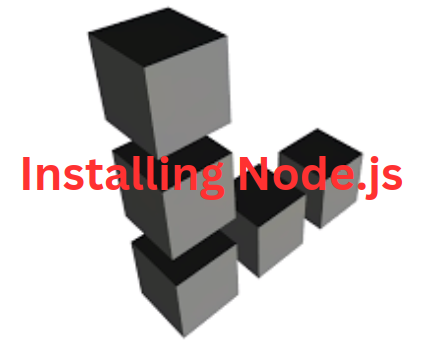Need to deploy nodejs on Linode? Then, this article is for you. As part of our Linode Managed Services, Bobcares provides answers to all of your questions.
Overview
- How to Deploy Nodejs on Linode?
- Prerequisites
- Steps of Node.js-Linode Deployment
- Benefits of Node.js-Linode Deployment
- Challenges of Node.js-Linode Deployment
- Conclusion
How to Deploy Nodejs on Linode?
The process of configuring a server on Linode’s platform to execute Node.js apps is known as “Node.js deployment on Linode.” This include setting up the server environment, installing the required apps, and making sure the application can be accessed online.
Prerequisites
1. Basic Linux Knowledge

2. SSH Client
3. Basic Understanding of Node.js
4. Git Knowledge
5. Linode Account Setup
6. Linux Server Configuration
7. SSH Key Pair, Firewall & Security Groups
8. Domain Name & DNS Config
9. Software and Tools including Node.js and npm, nvm (Node Version Manager), Process Manager (PM2), Nginx or Apache
10. Basic SSL Knowledge and Certbot for SSL
11. Deployment Tools such as SCP, Git
12. Log Access and Test Environment Setup for Testing & Debugging
Steps of Node.js-Linode Deployment
Set Up the Linode Server
1. Create a Linode Account:
i. Sign Up: Visit the Linode website, create an account, and provide payment information.
2. Create a Linode Instance:
i. Select Distribution: Choose a Linux distribution like Ubuntu.
ii. Access Server: Connect via SSH using the server’s IP address:
ssh root@your_ip_address
iii. Security: Set up SSH keys for secure access instead of a password.
Install Node.js
1. Update Package Index:
sudo apt-get update
2. Install Node.js with nvm:
i. Install nvm:
curl -o- https://raw.githubusercontent.com/nvm-sh/nvm/v0.39.1/install.sh | bash source ~/.bashrc
ii. Install Node.js:
nvm install node
iii. Verify Installation:
node -v npm -v
Upload the Application
1. Transfer Files:
i. Using SCP:
scp -r /path/to/your/app root@your_ip_address:/path/on/server
ii. Using Git:
git clone https://github.com/yourusername/your-repo.git
Install Dependencies
1. Navigate to App Directory:
cd /path/to/your/app
2. Install Using npm:
npm install
Run the Application
1. Use a Process Manager (PM2):
i. Install PM2:
npm install -g pm2
ii. Start Application:
pm2 start app.js
iii. Manage Application:
pm2 logs pm2 restart app pm2 stop app
Set Up Nginx as a Reverse Proxy
1. Install Nginx:
sudo apt-get install nginx
2. Configure Nginx:
i. Create Configuration File:
sudo nano /etc/nginx/sites-available/your_domain
ii. Add Configuration:
server {
listen 80;
server_name your_domain;
location / {
proxy_pass http://localhost:3000;
proxy_http_version 1.1;
proxy_set_header Upgrade $http_upgrade;
proxy_set_header Connection 'upgrade';
proxy_set_header Host $host;
proxy_cache_bypass $http_upgrade;
}
}
3. Enable Configuration:
sudo ln -s /etc/nginx/sites-available/your_domain /etc/nginx/sites-enabled/ sudo nginx -t sudo systemctl restart nginx
Secure the Application
1. Set Up SSL with Let’s Encrypt:
i. Install Certbot:
sudo apt-get install certbot python3-certbot-nginx
ii. Obtain SSL Certificate:
sudo certbot --nginx -d your_domain
iii. Certbot Setup:
Enter the email for notifications.
Agree to the Let’s Encrypt Subscriber Agreement.
Specify the domain(s) we want to secure.
Certbot will configure SSL automatically and renew certificates as needed.
Benefits of Node.js-Linode Deployment
1. High Performance: Node.js is powered by the lightning-fast V8 engine found in Chrome. This implies that it is ideal for busy websites or apps as it can accommodate several users at once without experiencing any lag.
2. Scalability: Real-time applications and services can benefit from Node.js’s capacity to manage several concurrent connections at a high throughput.
3. Unified Language: JavaScript can be used on both the front end, which is what people see, and the back end, which is the server side, using Node.js. Because they can reuse code across the two sections and only need to know one language, this simplifies things for developers.
4. Rich Ecosystem: npm (Node Package Manager) provides access to a vast collection of tools and packages for Node.js. This speeds up the development process by enabling developers to locate pre-made solutions for frequent issues.
5. Real-time Capabilities: Applications that require fast updates, such as chat apps or live alerts, flourish when developed with Node.js. It can easily manage real-time communication.
Challenges of Node.js-Linode Deployment
1. Single-threaded Nature: Requests are handled by a single thread in de.js. If the program has to perform a lot of complex calculations, this might be an issue since it could cause everything to run more slowly.
2. Dependency Management: A lot of external packages (code libraries) are needed for Node.js to function. Although they can be useful, if not handled appropriately, they can also pose a security risk or cause compatibility issues.
3. Immature Modules: Not all packages made accessible by npm are guaranteed to be trustworthy or have adequate documentation. Developers may find it more difficult to use them without experiencing problems as a result.
Learning Curve: Node.js might be a little challenging to understand at first if we’re new to programming, especially asynchronous programming, which allows activities to run simultaneously.
[Looking for a solution to another query? We are just a click away.]
Conclusion
This post from our Experts provides a streamlined process to deploy the Node.js application on Linode, ensuring a secure and efficient setup using industry best practices.







0 Comments